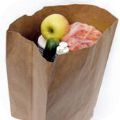|
Characteristics: A unification of Japanese, Chinese and Mongolian traditions, known for its variety—particularly when it comes to condiments—Korean meals are generally grilled, stir-fried or stewed. Flavors vary among sweet, sour, salty, hot and bitter. Soups, served hot or cold, are often served in natural stone bowls. Some foods can be extremely spicy hot. Common Ingredients: Entrees offer lots of seafood, such as fish, clams, oysters, shrimp, crab and squid, beef, pork and chicken. Most dishes are served with buckwheat noodles or rice, and tend to include scallions, sesame seeds, mung beans, carrots, cabbage, radishes, cucumbers, and other vegetables. Meals are seasoned with garlic, sesame oil, soy sauce, ginger and spice pastes, and are generally accompanied by kimchi, an assortment of pickled vegetables. Hidden Dangers:
Healthy Finds:
The Big Tip: Most dishes come with many condiments, sauces and even ingredients on the side, so you can control what is added to your dish. Back to Main Menu |




.png)